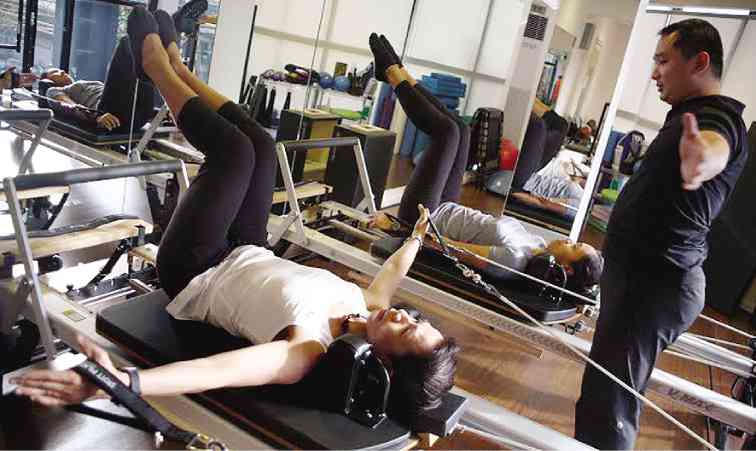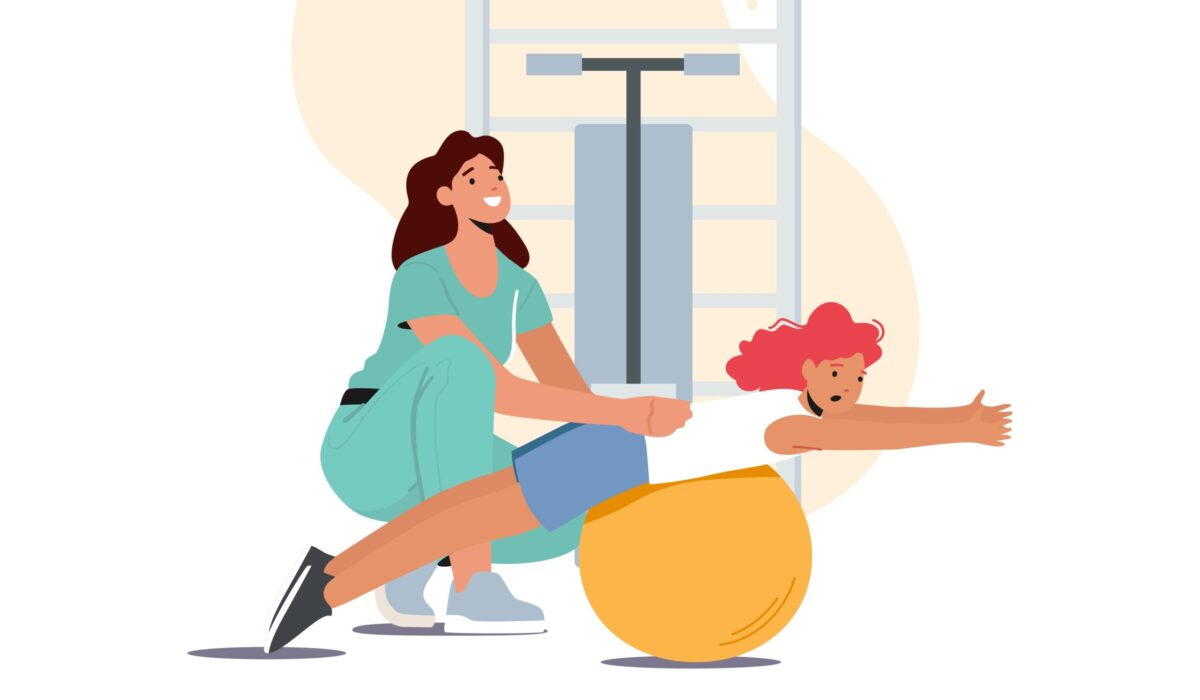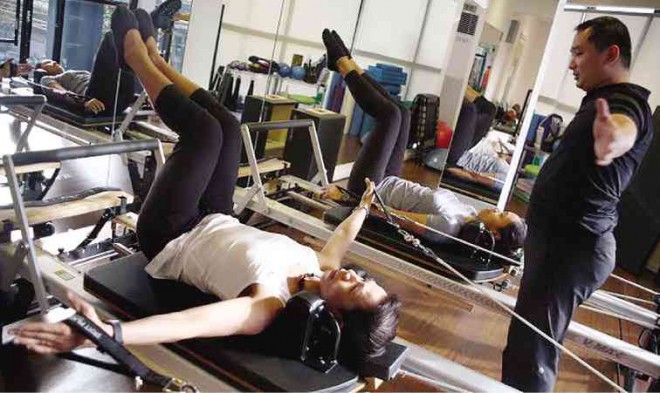
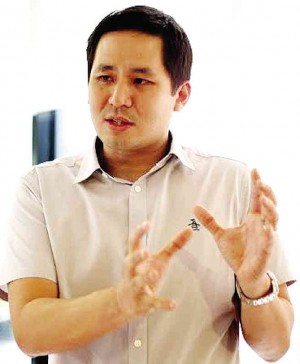
They’re a group of specialized physiotherapists and movement specialists trained to incorporate Pilates in rehabilitating injuries and chronic pain.
They build relationships with their patients, becoming extra sensitive to their mood and behavioral changes, encouraging them to keep on going but, more importantly, also knowing when to set restrictions.
This is physical rehab, 21st-century style. This is Clinical Pilates.
“It’s Pilates in business class. This is a highly specialized discipline. We provide first-rate rehab service based on principles that are grounded on scientific studies. We make sure everything is positive here. The muscles need to be activated, but emotions have to be corrected, as well,” said Ole Eugenio, founder and program director of Options Studio.
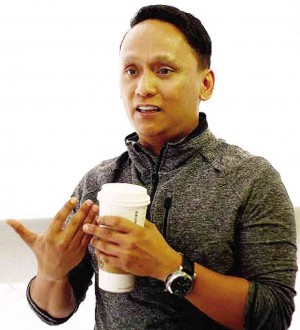
Eugenio is also the co-designer of last year’s successful Core Suspend, an exercise program that is now a recognized education provider by the American Council on Exercise.
Partnering with one of the country’s top sports and celebrity chiropractors, Dr. Anton Cancio, Options Studio opened the country’s first and only Clinical Pilates rehab program this year at the 3/F 101 Connecticut cor. Missouri Sts. in Greenhills, San Juan, just above Cancio’s clinic, Cancio Chiropractic. It is open Monday to Saturday, 6 a.m.-9 p.m.
Under the guidance of Cancio, the therapists—all fitness- and Pilates-certified trainers—adjust the Pilates program according to the doctor’s instructions. These instructions are mostly composed of what patients should not be doing during a movement.
Synergy
“Pilates has allowed my patients to hold their adjustments longer because the muscles become stronger. It really wakes up those ‘sleeping muscles,’ those we don’t normally address,” Cancio said.

There’s a synergy between the muscle, the joints and the spine, Cancio said. When he aligns the spine, for instance, the muscles have to work together to support it well. When the wrong muscles are fired or if an imbalance of muscle strength from misguided training happens—and this is usually the case when patients go from rehab straight to their gym instructors—the alignment won’t hold long, the pain returns and they come back for more treatment.
To avoid this cycle, Cancio decided to open a studio above his clinic. It has always been his plan to open a wellness center that can provide high-quality professional service under one roof. Options Studio was the perfect partner of choice.
For patients who are not ready to go into full-on one-on-one fitness training, Clinical Pilates will give them a guided and controlled type of rehab that will someday take them to their fitness goals.
“I don’t really like it when patients come back to me, in pain, after a treatment. ‘Doc, I don’t know if I pushed myself too hard or if my trainer did it wrong.’ There’s always that injury, nursing it, and then fitness. You can’t go from injury to fitness,” Cancio said.
With a team of specialists, patients can look forward to avoiding that cycle. Instructors report to Cancio before and after each session. This way, he stays constantly updated with their programs.

Patients who enroll in the program include those with slipped discs, shoulder pain, scoliosis, knee injury, osteoporosis and osteoarthritis, chronic bad posture that leads to neck pain, prenatal and postnatal problems like back pain, athletes with sports-specific conditions, or those seeking to improve performance in sports like golf, tennis, basketball, football and running.
Cancio said Clinical Pilates can bring down a 38-degree scoliosis curve, for instance, to 30 degrees or less. Although scoliosis can never be fully corrected, by restoring balance and bringing the muscles to optimum health, the structure is able to move, since the spine and joints now offer better mobility, he said.
Daily function
“Ours is a program that can restore daily function. With the awareness and willingness of the patient to improve, we can write them a very good program suited to their needs. We provide the inspiration, but at the end of the day it’s really up to the patients,” Eugenio said.
Clinical Pilates does not use conventional weights like those found in gyms or rehab centers. Instead, it uses Pilates equipment like Tower Trainers, stability chairs, reformers, suspension ropes, stability balls—equipment that encourages three-dimensional training.
The springs in these machines, for instance, perform much better than traditional weights like dumbbells. They resemble more closely muscle contractions, emphasizing concentric and eccentric contraction to prevent injuries.
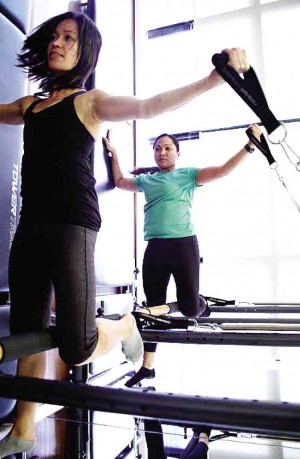
The more you press, the more you’ll be working against the resistance, Eugenio said. The even tension throughout the entire movement makes it more effective, increasing strength faster and more effectively.
With suspension ropes, patients need to stabilize them first before they can execute a movement properly.
“We don’t go deeper into the motor learning of the muscle. When you get injured, your muscle firing pattern will be changed, and that’s why you develop some tightness. There’s an abnormal muscle firing pattern. And this is what we’re correcting,” Eugenio said.
But it’s not all about adjustment and strength-building. Eugenio said there are some functions that cannot be corrected by exercise alone. And here’s where Cancio Chiropractic myotherapy comes in.
Myotherapy is a manual therapy that combines different customized massage techniques that focuses on problem areas in the muscle, such as chronic trigger points, scar tissue, nodules, tightness/stiffness and muscle spasms. These problem areas can all cause referred pain to other areas of the body. Myotherapy isolates these trouble spots and frees up the muscle so it regains flexibility and allows normal muscle function.
“It’s the integration of the whole body when you do a movement. Unlike doing bicep curls, for example, you move just the bicep. In Pilates, you learn to stabilize the core to be able to do a movement more efficiently while protecting your back,” Eugenio said.
Cancio said the core is not just about the abdominals, although that’s what many people know from coveting those six-pack abs they see in magazines. The core includes the pelvis, hip muscles and glutes.
“The reason we don’t get injured is because, even before we move, for a few milliseconds, the core is engaged to protect the spine. This we learn even as babies. We don’t consciously think about it now. But when you’re sedentary or have just given birth, those core muscles become weak and no longer engage prior to movement. So you get a back pain when you pick up an object from the floor,” he said.
By activating the core muscles and small muscles in the spine with resistance, patients will relearn to switch on those muscles. Through repeated feedback to the mind and body, patients will gain muscle memory until it becomes an automatic response.

